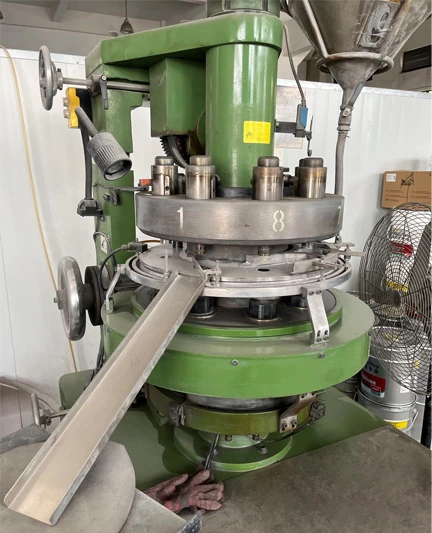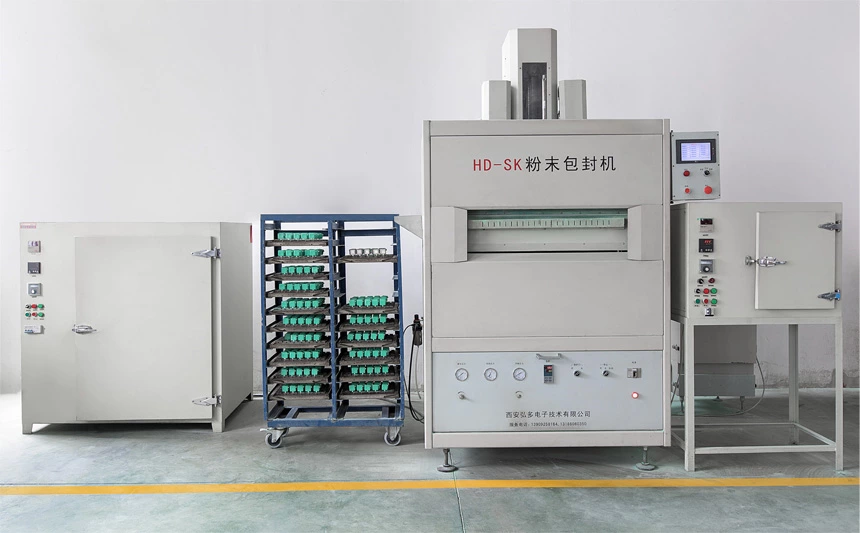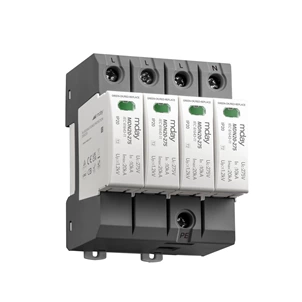Self-developed and produced lightning protection chip for surge protective device
Abstract: The core of a surge protective device is its lightning protection chip; the lightning protection chip is a ceramic semiconductor component with a transient voltage suppression function that is sintered by adding a variety of metal oxides to raw materials. Because of its unique volt ampere characteristics, it can be used to replace Zener diodes and some capacitor equipment. It is used in parallel with protective devices to prevent the damage to electrical components caused by current surge and electrostatic discharge due to sudden increase of voltage in a circuit.
The conventional lightning protection chips have two forms, namely a square chip and a round chip, and two processes, namely a chip silver preparation process and a powder encapsulation process.

Step 1. Prilling Tower

The lightning protection chip has its own unique formula, such as nickel oxide, cobalt dioxide, bismuth oxide and other metal oxides. The chip formula of each enterprise is different, and the chip performance produced is also different. The metal oxides are mixed and produced into powder through the prilling tower, which is the raw materials of the lightning protection chip.
Step 2. Chip Pressing Equipment


After powder granulation of the lightning protection chip is completed, it will be pressed into a round chip (25D chip, general current is In:10kA) or a square chip (34S chip, general current is In:30kA, Iimp 12.5kA), a higher current is usually realized by stacking every two chips, the cross section of the chip determines the size of the current, and the thickness of the chip determines the size of the voltage.
Step 3. Glue Discharging Furnace

After the basic shape of the chip is pressed, the next step is to discharge the glue (that is, PVE glue in the granulation process is discharged).
Step 4. MOV Sintering Furnace
The chip after being subjected to glue discharging through the glue discharging furnace is put into the MOV sintering furnace and sintered at a high temperature of more than 1000 degrees for 24 hours, and then the chip will become a ceramic black solid chip. After multiple cleaning, a bare chip is finished.
Step 5. Chip Silver Preparation

A pure black bare zinc oxide lightning protection chip does not have a conductive function. We need to coat silver conductive paste on both sides of the chip, and obtain a conductive silver film by sintering (within 600 degrees). The thickness and uniformity of the silver layer and the silver content of the conductive paste will affect the performance of the chip
Step 6. After Chip Silver Preparation

After the preparation of silver, the lightning protection chip shall be sorted and tested by the automatic pressure-sensitive sorter, and the products with different voltage levels (such as 471K,621K,681K, etc.) shall be sorted out, and the leakage current (less than 20μA) which is too high shall be eliminated
Step 7. Automatic welding production line

An automatic welding production line independently developed by our company can weld different pin electrodes (red copper) on the chip to correspond to various types of surge protective devices. There is a layer of tin between the chip and the pin. The tin will be melted after being heated by reflow soldering, and the chip and the pin electrodes (red copper) will be firmly welded together.
Step 8. Powder Coating

Another form of the lightning protection chip is chip encapsulation. The finished chip is fixed to a fixture and put into the powder coating. After the high temperature of 200 degrees, encapsulation is performed for about one minute (preheating for 25S, powder loosening for 15S, precipitating for 10S, powder dipping for 1.5S and leveling for 15S), and finally, a layer of smooth epoxy encapsulation powder is attached to the surface of the chip.
The main functions of the epoxy encapsulation powder are: 1, to protect the chip from the influence of the external environment; 2, to resist external solvents, moisture and impact; 3, to electrically insulate the chip from the external environment; 4, to facilitate installation; and 5, to diffuse heat.
After 20 years of continuous research, development and improvement, the wrdz lightning protection chip has fast response speed, low residual voltage and stable performance, and has passed the certification of Shanghai Lightning Protection Test Center and CE certification. The 48R square chip with the model of WR48RXKY and the 34S square chip with the model of WR34SXKY have passed the TUV certification of Germany Rhine at one stroke.
48R square lightning protection chip, model: WR48RXKY
(10/350μs) waveform Iimp impulse current can withstand up to 12.5kA, this breakthrough can change the size of the entire T1 lightning arrester. The original product with a width of 36mm is replaced by a single pole product with a width plus height of 18mm, which greatly saves the space of the box, and can be pluggable, which is more convenient for product replacement.
34S square lightning protection chip: WR34SXKY
(10/350μs) waveform Iimp impulse current can withstand up to 8kA, which is a big improvement and breakthrough compared with the chip of 6.25kA on the market.









